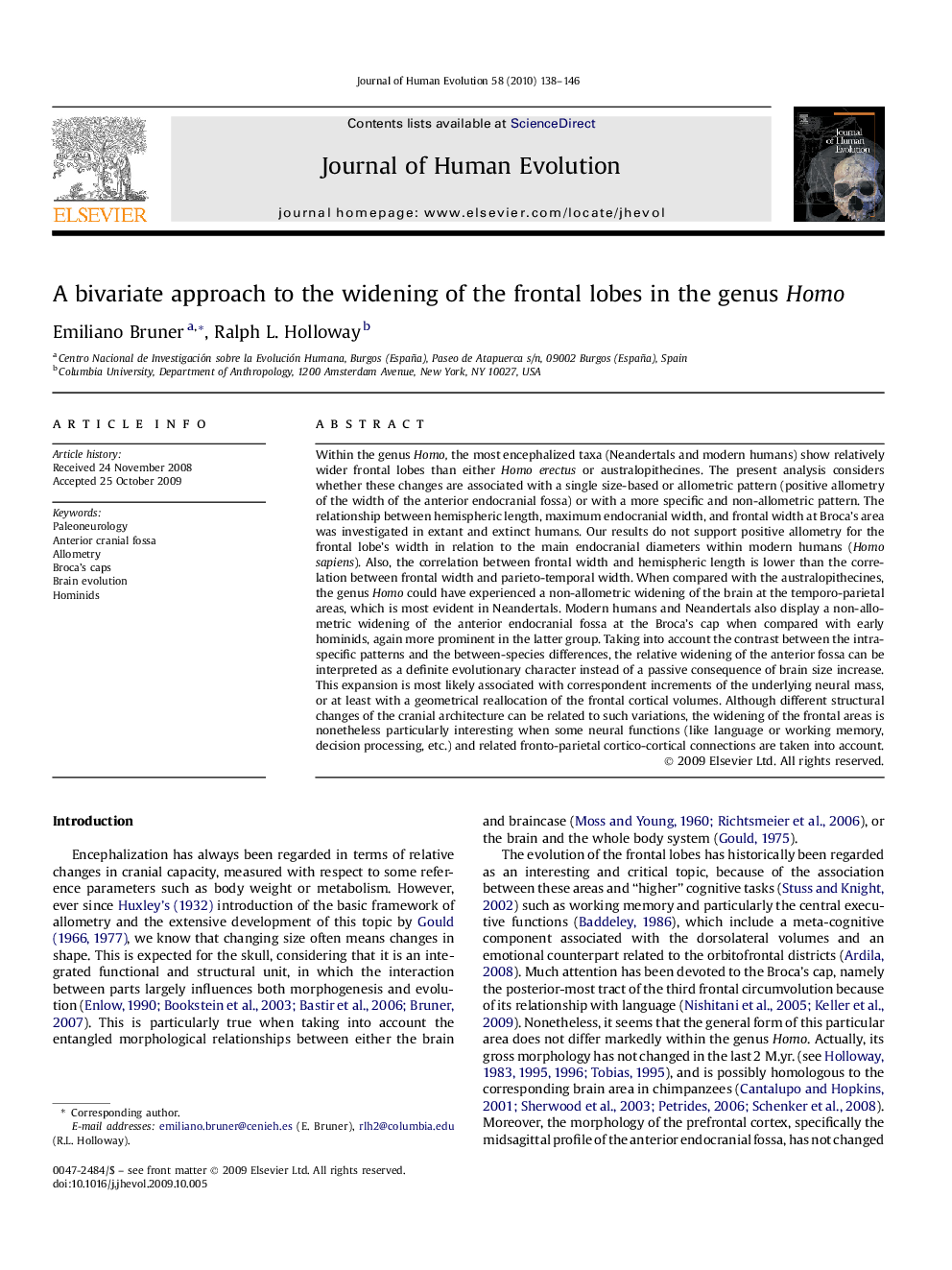| Article ID | Journal | Published Year | Pages | File Type |
|---|---|---|---|---|
| 4556926 | Journal of Human Evolution | 2010 | 9 Pages |
Within the genus Homo, the most encephalized taxa (Neandertals and modern humans) show relatively wider frontal lobes than either Homo erectus or australopithecines. The present analysis considers whether these changes are associated with a single size-based or allometric pattern (positive allometry of the width of the anterior endocranial fossa) or with a more specific and non-allometric pattern. The relationship between hemispheric length, maximum endocranial width, and frontal width at Broca's area was investigated in extant and extinct humans. Our results do not support positive allometry for the frontal lobe's width in relation to the main endocranial diameters within modern humans (Homo sapiens). Also, the correlation between frontal width and hemispheric length is lower than the correlation between frontal width and parieto-temporal width. When compared with the australopithecines, the genus Homo could have experienced a non-allometric widening of the brain at the temporo-parietal areas, which is most evident in Neandertals. Modern humans and Neandertals also display a non-allometric widening of the anterior endocranial fossa at the Broca's cap when compared with early hominids, again more prominent in the latter group. Taking into account the contrast between the intra-specific patterns and the between-species differences, the relative widening of the anterior fossa can be interpreted as a definite evolutionary character instead of a passive consequence of brain size increase. This expansion is most likely associated with correspondent increments of the underlying neural mass, or at least with a geometrical reallocation of the frontal cortical volumes. Although different structural changes of the cranial architecture can be related to such variations, the widening of the frontal areas is nonetheless particularly interesting when some neural functions (like language or working memory, decision processing, etc.) and related fronto-parietal cortico-cortical connections are taken into account.
